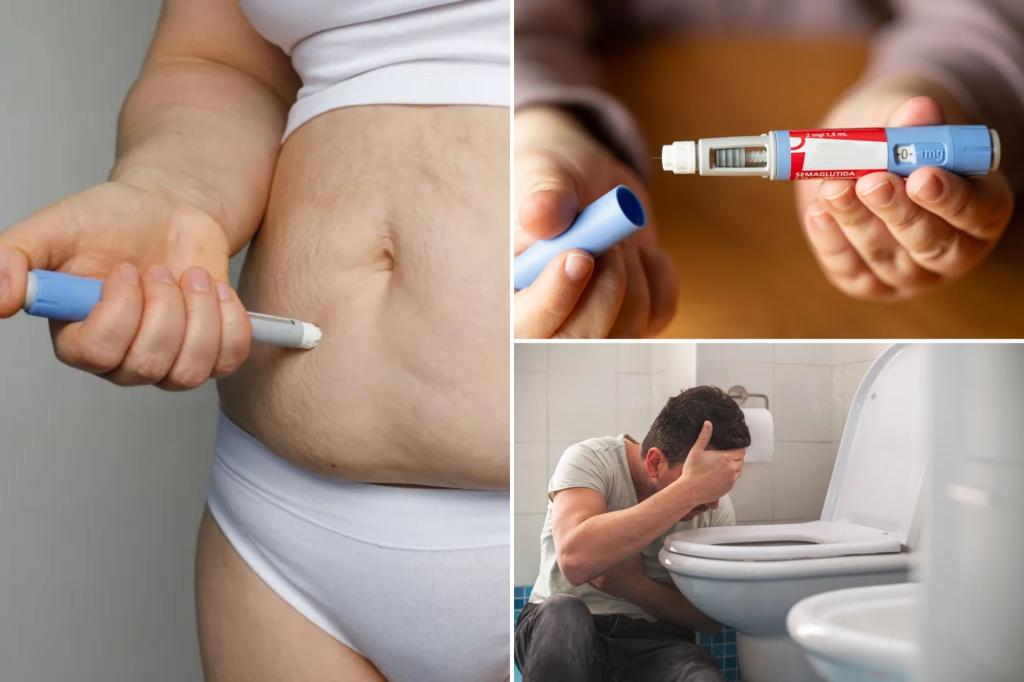GLP-1 users might be jabbing for weight loss, but many are trying to combat cash loss by squeezing an extra dose out of their medication.
The trend, dubbed “golden dosing,” has been hyped by social media users as a way to get more bang for your buck. But doctors are warning it could be dangerous — and even set back your weight loss goals.
“Using a medication outside of its prescribed method is always risky — and in this case, especially unnecessary,” Dr. Michael Snyder, medical director of Bariatric Surgery at Rose Medical Center and an in-house expert at FuturHealth, told The Post.
What is golden dosing?
GLP-1 drugs like Ozempic, Mounjaro and Wegovy come in injectable pens that contain four doses, with each device lasting about a month.
But some users have noticed that their pens often have leftover liquid after their final jab.
This extra medication isn’t a mistake. It’s designed to allow for an initial flow check and to ensure that each of the four doses is accurate and complete.
Nevertheless, some TikTok users are extracting this leftover liquid with syringes and needles, using it as a fifth and final “golden dose.” With out of pockets costs for these drugs sometimes topping $1,000 a pen, pulling out the extra medication has become a way to cut back a bit on exorbitant costs.
But experts say the trend raises some major red flags.
“The ‘golden dose’ is more of a cost-saving strategy than one focused on safety and effectiveness,” Dr. Shiara Melissa Ortiz-Pujols, a bariatric surgeon at Northwell Health, told The Post.
A dose of confusion
GLP-1 pens deliver pre-measured doses that are carefully prescribed by healthcare providers based on factors like weight and health status.
“Any deviation — even what might seem like a ‘small’ one — can disrupt how your body responds,” Snyder warned.
GLP-1s are typically titrated, meaning the dosage is gradually increased over time to help the body adjust to the drug.
“As we increase the dose, we expect greater effectiveness, but we also face a higher risk of severe side effects,” Ortiz-Pujols explained.
Increasing your dose too quickly or taking inconsistent amounts week to week can worsen side effects, she said.
It could also complicate your treatment plan, making it difficult for doctors to accurately track how your body is responding to the medications and make informed adjustments based on your personal needs, Snyder cautioned.
From hack to hazard
Attempting to recover leftover medication using a syringe also carries “very real risks” for your health, Snyder said.
Even minor miscalculations can lead to overdoses, triggering symptoms like nausea, vomiting and even pancreatitis.
On the flip side, underdosing can blunt the drug’s effectiveness, resulting in weight regain and glucose instability.
“To put it simply, how comfortable would you feel using what you think is the ‘right amount’ of a blood pressure medication, a blood thinner, or a narcotic?” Snyder posed. “All of those could be recipes for disaster. This situation is no different.”
A hidden danger
The trend also poses a serious risk of infection.
“GLP-1 pens are designed to be used as a sealed system,” Snyder said. “Using an external syringe breaks sterility, exposing the medication to bacteria during handling — even from clean-looking surfaces or hands.”
This can lead to local infections at the injection site or even systemic infections, Snyder noted, emphasizing that the risk is particularly high for those who reuse syringes or directly touch the drug solution.
“There’s no reliable way to make this DIY method safe,” Snyder said. “That’s why these pens are single-use and designed for highly controlled administration.”
